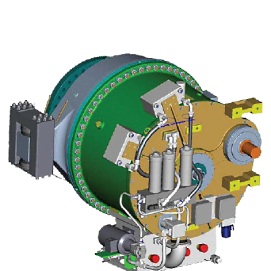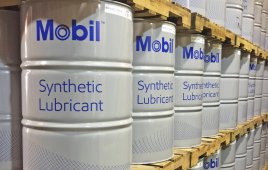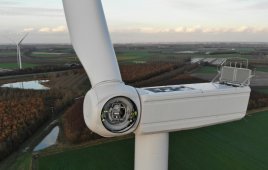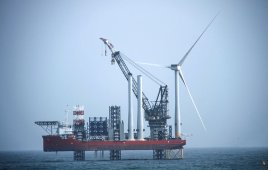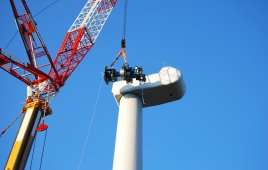Manufacturers of specialty lubricants frequently adjust their product lists for wind-power equipment. For instance, a recent high-performance grease comes from a special blend of base oil and additives to cover different lubrication requirements of individual bearing applications. The grease is well suited for most in-nacelle tasks.
Recent ideas to reduce maintenance costs and simplify lubrication routines in the nacelle include switching to one lubricant for all bearings. Another is an adhesive grease for open gears. The grease is said to provide good adhesion and protection against high loads and corrosion. It is well suited to lubricating gears in pitch and yaw drives, while reducing the risk of migration inside the nacelle and onto the tower.
Another recent lubricant for wind turbine gearboxes provides a high viscosity to address cold weather effects, without need for additional viscosity-index improvers. It has a higher heat capacity than hydrocarbon oils, which lets it transfer more heat, forestalling a shutdown when turbine output is at its maximum. The lubricant has better lubricity at ambient conditions, and so has potential to shift a turbine’s power-versus-wind-speed curve to the left, leading to greater power output when it is less than maximum. Lubricants of this sort are also said to address the issue of micropitting, which can lead to wearing and changes in gear teeth shape, reducing gear accuracy, and increasing vibrations and noise. High-viscosity lubricants provide a relatively thick lubricant film that can help reduce debris and worn particles that often accompany less well-lubricated gears.
The demand for larger MW-class turbines, and the goal of further improvements in reliability and protection under extreme conditions are driving development of a new generations of high-performance industrial lubricants and greases. For example, one lube formulator recently announced the introduction of a portfolio of lubricants and greases for the wind sector specifically for main gearbox, yaw and pitch drives, bearings, hydrostatic, and hydraulic systems. The portfolio is based around three tiers: mainline, premium and advanced, with advanced often using the latest synthetic-lubricant technology.
Operating turbines in remote areas with extreme climatic conditions adds to the lubrication challenge. Whether it’s to extend maintenance intervals and increase reliability with purpose-designed, low-temperature hydraulic oils, or to protect blade bearings from fretting corrosion and false brinelling there is a wide range of lubricants from which to choose.
A few specialized lubricants with characteristics intended for particular tasks include low-temperature fluidity and long oil life. Such a lubricant provides benefits for difficult to maintain wind turbine gearboxes. The lubrication know-how is such that synthetic gear oils can offer protection from common failure modes, including micropitting and bearing wear. Another formulation of synthetic gear oil is intended for yaw and pitch drives. And greases are formulated to protect bearings against fretting corrosion, moisture contamination, and false brinelling at Parker Hannifin temperatures as low as -55ºF
Filed Under: Lubricants

